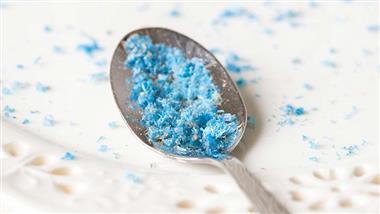by Dr. Joseph Mercola, Mercola:

STORY AT-A-GLANCE
- A Consumer Reports investigation into plasticizers, which are chemicals widely used to make plastic flexible, found the compounds in 84 out of 85 food and beverages tested
- Bisphenol A (BPA) was found in 79% of the samples, which included fruits, vegetables, milk, meat, seafood, baby food and more; phthalates were detected in every food tested except one
TRUTH LIVES on at https://sgtreport.tv/
- The product with the most phthalates was Annie’s Organic Cheesy Ravioli, with 53,579 nanograms per serving; Del Monte sliced peaches and Chicken of the Sea pink salmon had the next highest levels
- Phthalates enter food via multiple avenues, including agriculture, pasteurization, packaging and from plastic tubing, conveyor belts and vinyl gloves
- Plasticizer chemicals may contribute to multiple health problems, including diabetes, obesity, cardiovascular disease, certain cancers, birth defects, premature birth, neurodevelopmental disorders and infertility
There’s a good chance you’re eating plastic with virtually every meal, according to sobering findings from Consumer Reports. Their latest investigation into plasticizers, which are chemicals widely used to make plastic flexible, found the compounds in 84 out of 85 food and beverages tested.1
Perhaps most disconcerting, there was no rhyme or reason to the amount of plastic chemicals hiding in foods. Dairy products, ready-to-eat meals, canned or paper wrapped and even organics — all were contaminated with plastic. Further, while food packaging is part of the problem, it’s far from the only one. The human health implications of eating all this plastic are unprecedented.
84 of 85 Foods Contaminated With Plastic Chemicals
Consumer reports tested 85 foods, using two or three samples of each, for bisphenols and phthalates, well-known endocrine-disrupting chemicals. Bisphenol A (BPA) was found in 79% of the samples, which included fruits, vegetables, milk, meat, seafood, baby food and more. All of the foods were packaged, but the materials of the packaging varied from cans and pouches to plastic and paperboard.
Levels of BPA were “notably lower” than levels detected in foods in 2009, “suggesting that we are at least moving in the right direction on bisphenols,” James E. Rogers, Ph.D., who oversees product safety testing at Consumer Reports, said in a news release.2 This wasn’t the case for phthalates, however, which were detected in every product tested except for Polar raspberry lime seltzer.
The product with the most phthalates was Annie’s Organic Cheesy Ravioli, with 53,579 nanograms per serving. Del Monte sliced peaches and Chicken of the Sea pink salmon had the next highest levels.3 General Mills Cheerios, Wendy’s crispy chicken nuggets and Fairlife Core Power High Protein Milk Shake were among the other tested foods with notable levels of phthalates.
While none of the products tested contained BPA or phthalates at levels that exceeded thresholds set in the U.S. and Europe, this isn’t an indication of safety. “[M]any of these thresholds do not reflect the most current scientific knowledge, and may not protect against all the potential health effects,” Tunde Akinleye, a Consumer Reports scientist who oversaw the tests, said. “We don’t feel comfortable saying these levels are OK. They’re not.”4
There’s growing concern that regulators haven’t taken the necessary steps to keep these toxins out of the food supply. According to Consumer Reports:5
“For example, the federal government has banned eight phthalates in children’s toys. But, with the exception of a 2012 ban on BPA in baby bottles (extended in 2013 to infant formula cans), there are no substantive limits on plastic-related chemicals in food packaging or production.
Although the Food and Drug Administration no longer allows certain phthalates in materials that come into contact with food, the agency updated its regulations only after those chemicals were no longer in use. And just last year, it rejected an appeal from several groups calling for a ban on multiple phthalates used in materials that come into contact with food.”
How Are Plastic Chemicals Getting in Your Food?
Food packaging has received considerable attention for its role in contaminating the food supply. Indeed, bisphenols are common in the lining of metal cans, while plasticizers are widely used in plastic wraps, jar gaskets and other packaging. However, part of what makes the plastic problem so pervasive is that exposure occurs at each step of the food manufacturing process — starting on the farm.
Black plastic, sometimes referred to as plastic mulch, is a primary method of weed control for many organic farmers, particularly for tomato, pepper and melon plants. Many grass and perennial weeds are unable to penetrate the plastic, which also prevents sunlight from hitting the ground and stimulating the growth of weeds. But plastic mulch may be plowed back into the fields6 or is added to landfills as more plastic trash.
Plastic debris can contaminate water and soil near landfills, while burning plastic waste cause the chemicals to be released into the air. Microplastics from plastic trash end up in the environment, and plants can uptake plasticizers from the soil, as can animals, which consume plastics in their own food and water. During processing, foods are exposed to another round of plastics, Consumer Reports notes, including via:7
- Pasteurization, during which high temperatures may speed up leaching
- Vinyl gloves, which may contain more than one-third plasticizers
- Plastic tubing, used for milk and oils
- Conveyor belts, which are often plasticized



